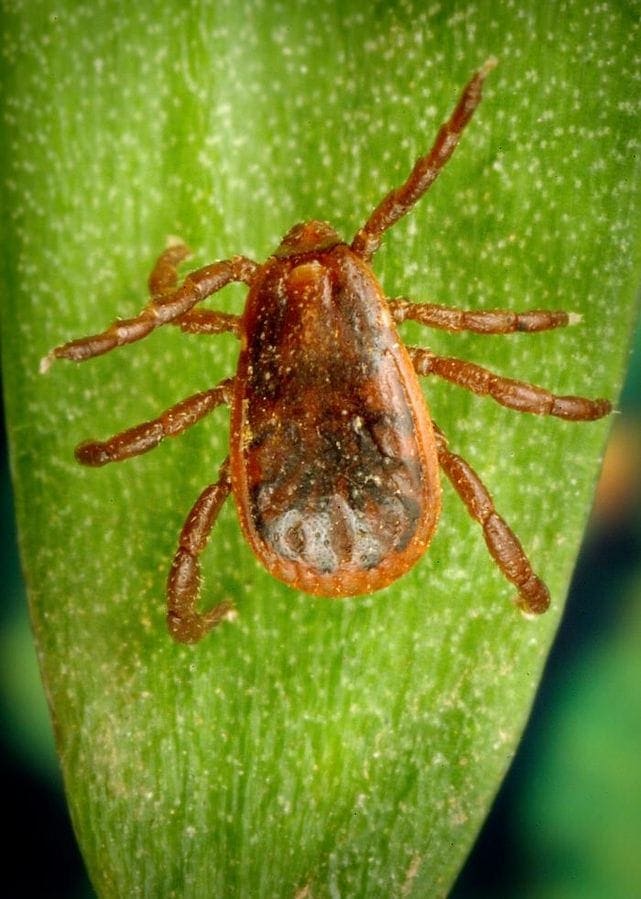What do brown dog ticks look like?
Unengorged, adult brown dog ticks are about 1/8″ long, but enlarge up to about 1/2″ long when engorged with blood. Both male and female dog ticks have flat, reddish brown, oval bodies, but when engorged may become gray-blue or olive color. Male dog ticks have tiny pits scattered over the back. Their scutum (shield) is present, and covers their entire back, while female scutum only covers the front part of a female’s back. In both male and female dog ticks, the eyes are on margin of the scutum, with mouthparts visible from above.
The most common sign of a brown dog tick problem is spotting one in your yard, on your body, or on your pet.
To remove a brown dog tick, use fine-tipped tweezers to grasp it as close to the skins surface as possible. Pull upward with steady, even pressure. Dont twist or jerk the tick as this can cause the mouth parts to break off and remain in the skin. Once the tick is removed, thoroughly clean the bite site with soap and water. Do not touch the tick but save it in rubbing alcohol for later identification. To dispose of it, flush the tick down the toilet or wrap it in a tissue before disposing in a closed receptacle. After the dog tick removal, consult with a doctor or veterinarian immediately if there is a reaction at the bite site or if you believe you have contracted a disease. To address ticks on your property, contact a licensed pest control professional to conduct an inspection and develop an effective treatment plan.
What is the brown dog tick life cycle?
The life cycle of the brown dog tick has four stages; egg, larva, nymph and adult. After brown dog tick eggs hatch, the larva finds a host (a dog) and attaches. Once fully fed, the brown dog tick larva detaches from the dog and hides in the environment (e.g. soil or vegetation). The larva then moults to become a nymph. Nymphs find a new host (another dog), feed and then detach in the same way as larvae. The nymphs then moult and either a female or male adult emerges. The adults find a new host (another dog) and the female and male ticks mate. The females feed on the host and then detach. They lay eggs in the environment and then die.
Can you get Lyme disease from the Brown Dog Tick?
The Brown Dog Tick is not known to carry Borreliae, the bacteria that cause Lyme disease. Though dogs can contract Lyme disease, they do so from the Eastern or Western blacklegged ticks, also known as deer ticks.
